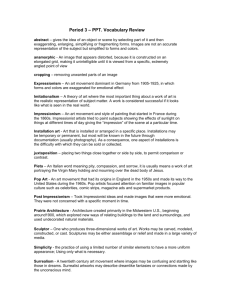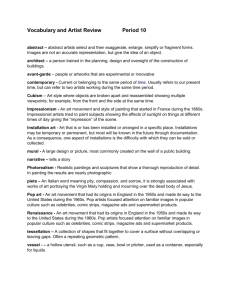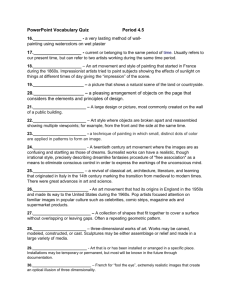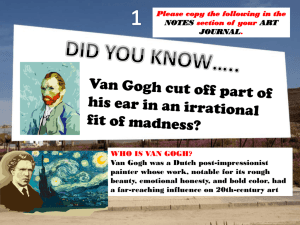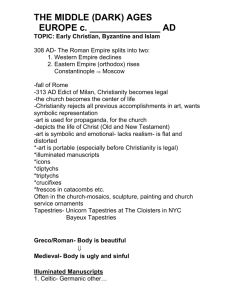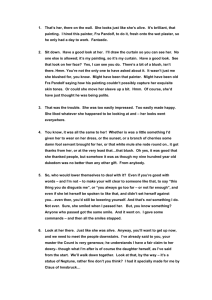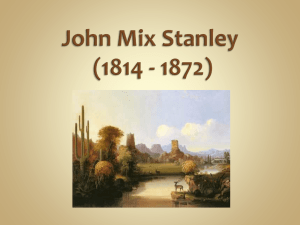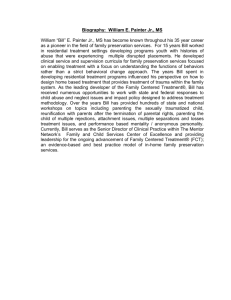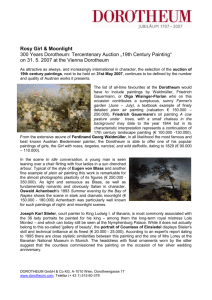Period 7/8 PPT
advertisement
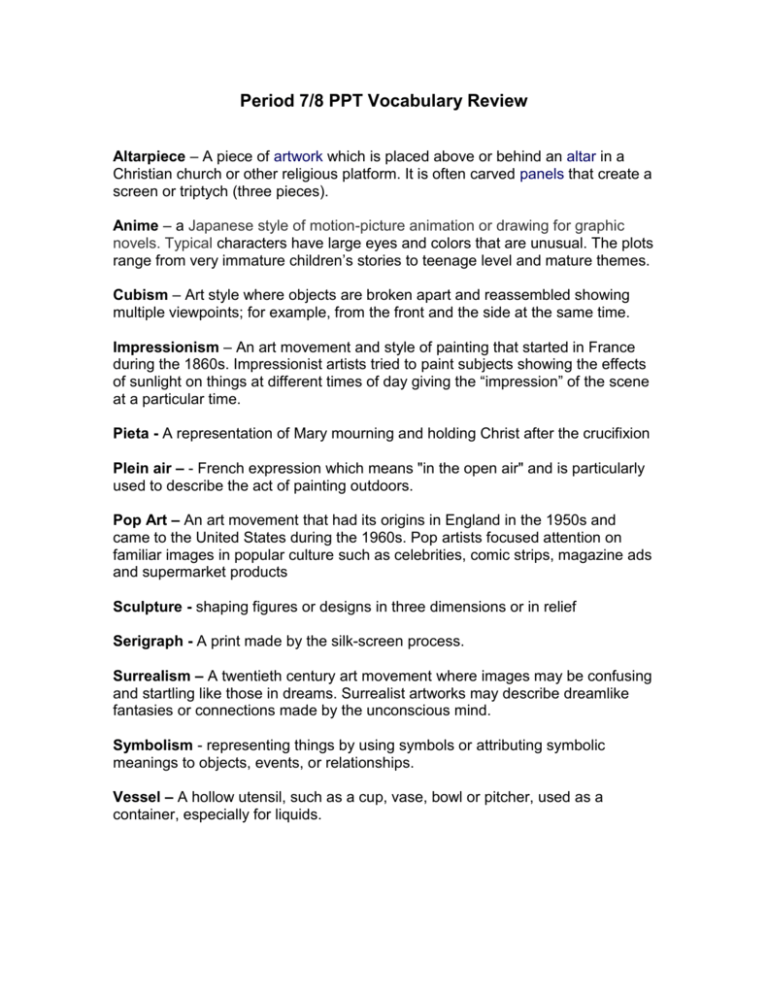
Period 7/8 PPT Vocabulary Review Altarpiece – A piece of artwork which is placed above or behind an altar in a Christian church or other religious platform. It is often carved panels that create a screen or triptych (three pieces). Anime – a Japanese style of motion-picture animation or drawing for graphic novels. Typical characters have large eyes and colors that are unusual. The plots range from very immature children’s stories to teenage level and mature themes. Cubism – Art style where objects are broken apart and reassembled showing multiple viewpoints; for example, from the front and the side at the same time. Impressionism – An art movement and style of painting that started in France during the 1860s. Impressionist artists tried to paint subjects showing the effects of sunlight on things at different times of day giving the “impression” of the scene at a particular time. Pieta - A representation of Mary mourning and holding Christ after the crucifixion Plein air – - French expression which means "in the open air" and is particularly used to describe the act of painting outdoors. Pop Art – An art movement that had its origins in England in the 1950s and came to the United States during the 1960s. Pop artists focused attention on familiar images in popular culture such as celebrities, comic strips, magazine ads and supermarket products Sculpture - shaping figures or designs in three dimensions or in relief Serigraph - A print made by the silk-screen process. Surrealism – A twentieth century art movement where images may be confusing and startling like those in dreams. Surrealist artworks may describe dreamlike fantasies or connections made by the unconscious mind. Symbolism - representing things by using symbols or attributing symbolic meanings to objects, events, or relationships. Vessel – A hollow utensil, such as a cup, vase, bowl or pitcher, used as a container, especially for liquids. Artists Hieronymus Bosch – 15th century painter who was known for depicting moral and religious themes, especially heaven and hell. Dale Chihuly - 20th and 21st century American glass blower who works in Seattle and has had many exhibitions in Columbus. He is known for his giant chandeliers. Salvador Dali – 20th century Spanish surrealist painter best known for The Persistence of Memory (melting clocks). His paintings were based on dreams and the subconscious. Frida Kahlo – Mexican painter who did many self portraits after a terrible bus accident. She had a “unibrow.” Leonardo da Vinci – – Italian Renaissance painter and inventor whose two most well known works are Mona Lisa and The Last Supper Michelangelo - – Italian Renaissance painter and sculptor most well known for the Sistine Chapel ceiling, The David statue and various pietas. Claude Monet – One of the first Impressionist painters best known for painting water lilies and using his own garden as inspiration. Pablo Picasso – Spanish painter credited with inventing Cubism. He had a Blue Period and a Rose Period. Joaquin Sorolla – Spanish painter of the late 19th and early 20th century known for portraits and landscapes and being very skilled at depicting the light in a scene. Osamu Tezuka – credited with inventing Japanese Anime and the characteristic “big eyes” style Vincent Van Gogh – Dutch painter and Post-Impressionist who painted Starry Night and cut off part of his ear. Andy Warhol – Pop artist of the 1960s who created prints of celebrities and products to comment on popular culture Frank Lloyd Wright - Well-known architect from the first half of the 20th century who promoted “organic architecture” which related the buildings to the specific site where they were placed.
